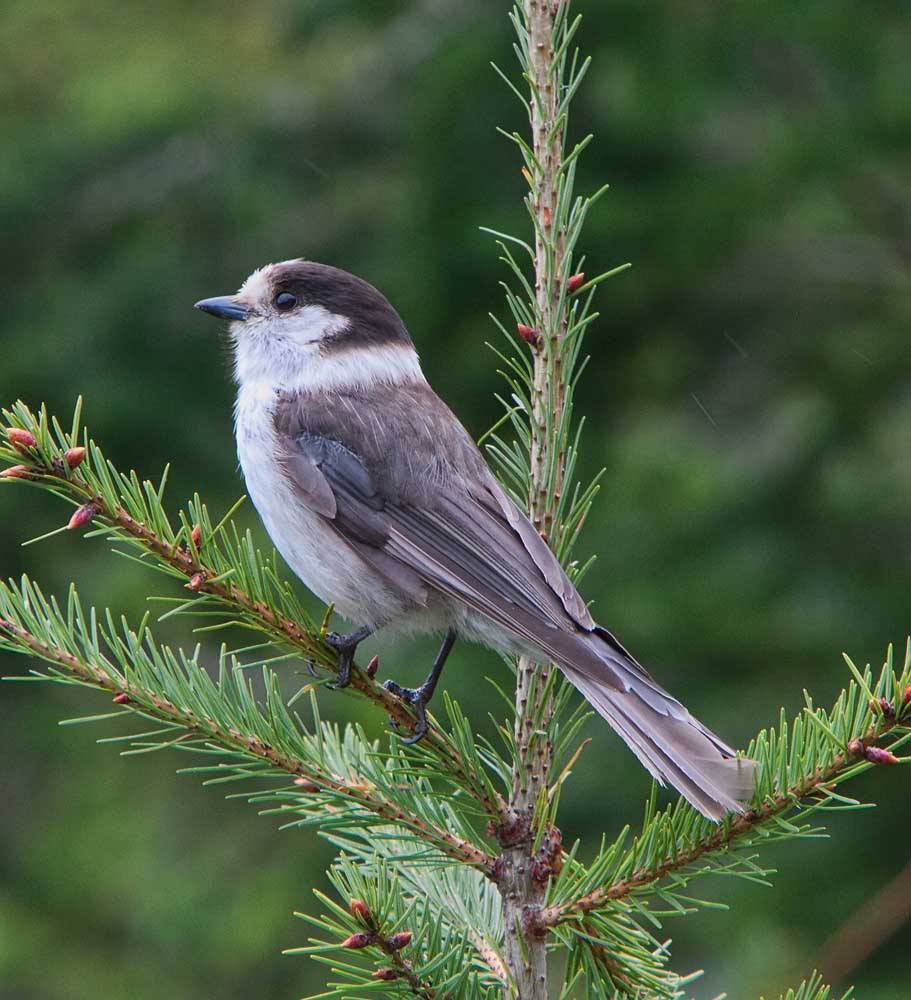Bird watch: gray jay
Published 7:47 am Wednesday, January 25, 2017

- (Tom Lawler/For The Bulletin)
I recently read an article on Slate that said Canada had selected a national bird. You would have thought that Canada already had a national bird because of the common loon on the back of its dollar coins. Our gentle neighbors to the north decided, via public (but not winning) vote, that the national bird should be the gray jay. The winner was of course the loon, so via something like the Electoral College the popular vote did not prevail. Canadians did not pick something big and powerful such as an eagle, falcon or hawk but rather, a small corvid. Certainly an interesting choice in my opinion.
The gray jay is a member of the highly intelligent corvid family, which consists of ravens, crows, magpies and jays. The scientific name is Perisoreus canadensis. Perisoreus is of unknown origin but may be derived from the Greek work perisoreuo, which means to heap up, bury beneath. Canadensis means of Canada.
Trending
The gray jay is the sole New World representative of the Old World jays. Its round head and short bill is very different in appearance from our other jays. Gray jays are about 11½ inches long with a wingspan of 17 inches and weigh about 2½ ounces.
As the name implies, they are overall a varying degree of gray. The face is pale with black on the back of the head and upper neck. The throat and base of the neck are white. The tail is disproportionately long for a bird of its size. It could remind you of a big chickadee. These North American birds range from Alaska, throughout Canada and the very northern areas of the mid and eastern U.S., with a much more southern dispersal west of the Rockies. They are nonmigratory because their food stores will keep them fed during the winter. Their diet consists of insects, carrion, seeds, nuts, bird eggs and young birds. They store food, for later use, by stuffing it into tree bark or other crevices. Most of us think of jays as being raucous birds, but the gray jay has very mellow calls described as “wee-ah” and “chuck-chuck.”
The gray jay, also known as the camp robber, whiskey-jack and meat bird, is very common in Central Oregon’s mountainous areas. These birds will suddenly appear and help themselves to whatever food opportunities are present. They seem to be attracted to human activity. These birds can frequently be sighted around Mt. Bachelor ski area’s parking lots, and the Cascade Lakes and Paulina Lake regions.
Get out and enjoy the birds.
— Tom Lawler is an avid bird watcher and photographer. He serves on the East Cascades Audubon Society board and leads bird walks at the Sunriver Nature Center.
Trending
Gray jay
Scientific name: Perisoreus canadensis
Weight: 11½ inches
Height: 2½ ounces
Wingspan: 17 inches








